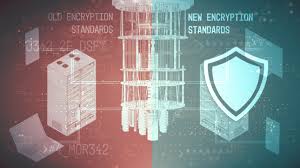You might find it surprising to learn that Google has been delving into post-quantum encryption for the Chrome desktop browser, but it’s true. Back in August 2023, Google revealed its efforts to secure Chrome traffic at the transport layer security level, employing an algorithm known as Kyber, which had yet to receive standardisation. Now, members of the Chrome team have announced that with the release of Chrome 131 on November 6, this experimental phase is coming to a close. Post-quantum protection will be accessible to all users through the fully standardised Module Lattice Key Encapsulation Mechanism. Here’s what you should know about this development.

On September 13, the Google security blog shared an intriguing update from a team that included David Adrian, David Benjamin, Bob Beck, and Devon O’Brien. They revealed that the Chrome web browser is set to embark on an essential new path toward enhancing its quantum security. However, this initiative feels more like an enhancement than a complete transformation—similar to laying down a fresh layer of asphalt on a well-trodden road. The Kyber algorithm has moved away from conventional standards established by the U.S. National Institute of Standards and Technology (NIST) and has now been refined and standardised. NIST has officially announced the availability of its final suite of encryption tools designed to withstand potential threats from quantum computers, urging server administrators to begin their transition promptly.

In a significant advancement for cryptography, Google has integrated an updated version of the post-quantum algorithm Kyber into its Boring SSL library. This revamped version, now referred to as the Module Lattice Key Encapsulation Mechanism (ML-KEM), incorporates some minor technical modifications and works alongside the established pre-quantum X25519 algorithm in a hybrid fundamental exchange framework. As a result, this standardised iteration is now available for use across various services that rely on Boring SSL for secure transport layer protocols. However, this new ML-KEM is not backwards compatible with earlier versions of Kyber, prompting Google to implement necessary adjustments in Chrome 131 to accommodate these changes.

When considering the adoption of a TLS solution based on post-quantum cryptography, it’s clear that numerous challenges lie ahead. Google highlights several key issues: First, the size of post-quantum cryptography makes it impractical to provide two simultaneous key share predictions. Additionally, there’s a significant risk that transitioning to this new security model could inadvertently compromise users’ existing post-quantum protections. This necessitates waiting until Chrome version 131 is released, allowing server administrators the necessary time to update their systems accordingly. Furthermore, since Kyber has always been in an experimental phase, continuing its support poses a risk of entrenching non-standard algorithms into the system.

Google expressed enthusiasm about enhancing security measures for Chrome users, ensuring protection against both present and forthcoming computing advancements. Tim Callan, the chief experience officer at Sectigo, highlighted the risks posed by potential nation-state actors who might create quantum technologies capable of compromising encryption while keeping their developments under wraps. He emphasised the urgent need for businesses to adopt proactive strategies to brace themselves for this eventual threat by shifting to quantum-safe algorithms before it becomes a pressing issue. As awareness grows, discussions around transitioning to quantum-resistant cryptography are likely to become a common topic in boardrooms.
Maxthon and Encryption
1. Understand Quantum Encryption Basics
Before delving into how Maxthon optimises quantum encryption, familiarise yourself with its fundamental principles. This innovative method uses the laws of quantum mechanics to secure data in a way that is theoretically impervious to eavesdropping.
2. Leverage Advanced Algorithms
Maxthon enhances security by employing sophisticated algorithms designed explicitly for quantum key distribution (QKD). These algorithms facilitate the creation and distribution of cryptographic keys securely over a network.

3. Integrate Compatibility Features
Maxthon ensures compatibility with existing encryption protocols. This integration allows users to transition smoothly to quantum-enhanced security without needing extensive hardware overhauls or software changes.
4. Focus on User Education
Maxthon prioritises user education regarding quantum encryption practices. By providing detailed guides and resources, users learn how to implement these security measures in their daily online activities effectively.
5. Implement Dual-Layer Security
To add another layer of protection, Maxthon utilises dual-layer security protocols. This redundant approach makes it significantly harder for potential attackers to penetrate their systems, even if they manage to access one layer.

6. Regular Security Audits
Maxthon conducts regular audits and updates its encryption technology based on the latest research in the field of quantum computing and cybersecurity threats, ensuring consistent improvement and robustness against emerging risks.
7. User-Friendly Interface
The platform features an intuitive interface that simplifies the management of quantum encryption settings for users. This ease of use encourages more people to adopt advanced security measures without feeling overwhelmed by technical complexities.
8. Encourage Community Feedback
Lastly, Maxthon actively seeks community feedback on its quantum encryption functionalities, allowing users to report issues or suggest improvements, thereby fostering continuous enhancement based on real-world experiences.

